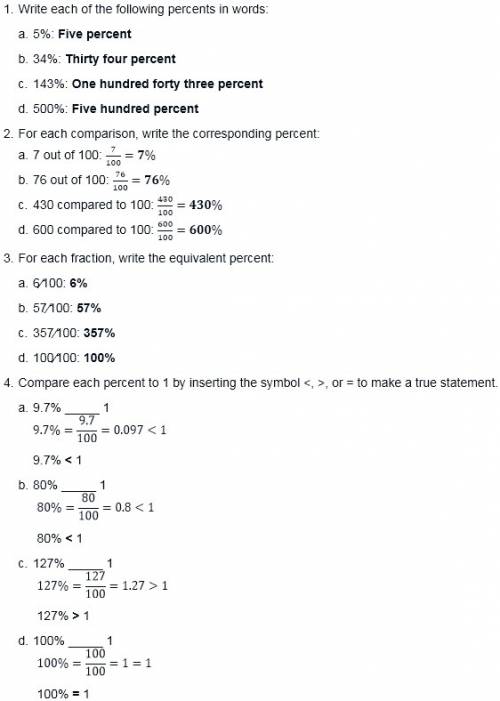 5
5 The mixture that is an equivalent ratio is:
1.5 white 2 blue
Step-by-step explanation:
a) Data and Calculations:
Mixtures of the same color because they are in equivalent ratios:
3 cups of white and 4 cups of blue: equivalent ratio = 0.75: 1 (75%) since 3/4 = 75%
6 cups of white and 8 cups of blue. equivalent ratio = 0.75: 1 (75%) since 6/8 = 75%
Other mixtures:
5 cups white 6 blue: equivalent ratio = 0.83: 1 (83%) since 5/6 = 83%
1 white 1 1/2 blue: equivalent ratio = 0.67: 1 (67%) since 1/1.5 = 67%
4 white 3 blue: equivalent ratio = 1: 75 (1.33%) since 4/3 = 1.33%
1.5 white 2 blue: equivalent ratio = 0.75: 1 (75%) since 1.5/2 = 75%
Therefore, the mixture with equivalent ratio as the initial mixtures is 1.5 while 2 blue.
 56
56 Options A, C and D.
Step-by-step explanation:
It is given that, we need 1 tablespoon of butter for every 6 eggs to make a quiche.
Ratio that compares these two quantities 
We need to find the ratios which are equivalent to this ratio.




Therefore, the correct options are A, C and D.
 7
7 Step-by-step explanation:
0.0627/501/64 I am not sure but I think it is 1/363⁵Idaho has the smallest population. 0.000857 1.414213562.. 1.5 x 10⁸ .16 3/32 6.2 29/30 I am not sure -1/6 4/9 2.25 .265 7
7 Step-by-step explanation:
0.0627/501/64 I am not sure but I think it is 1/363⁵Idaho has the smallest population. 0.000857 1.414213562.. 1.5 x 10⁸ .16 3/32 6.2 29/30 I am not sure -1/6 4/9 2.25 .265 56
56 Options A, C and D.
Step-by-step explanation:
It is given that, we need 1 tablespoon of butter for every 6 eggs to make a quiche.
Ratio that compares these two quantities 
We need to find the ratios which are equivalent to this ratio.




Therefore, the correct options are A, C and D.
 62
62 Please, see the attached files.
Step-by-step explanation:
Please, see the attached files.

 62
62 Please, see the attached files.
Step-by-step explanation:
Please, see the attached files.

 3
3 a.3
Step-by-step explanation:
2:x and 12:18
We need to get from 2 to 12 and 3 to 18
2* something = 12 x* something = 18
Divide by 2
something =12/2
something =6
x*6 = 18
x = 18/6
x=3
 71
71 answer is c or the third one
Step-by-step explanation:
i got right

It will provide an instant answer!
